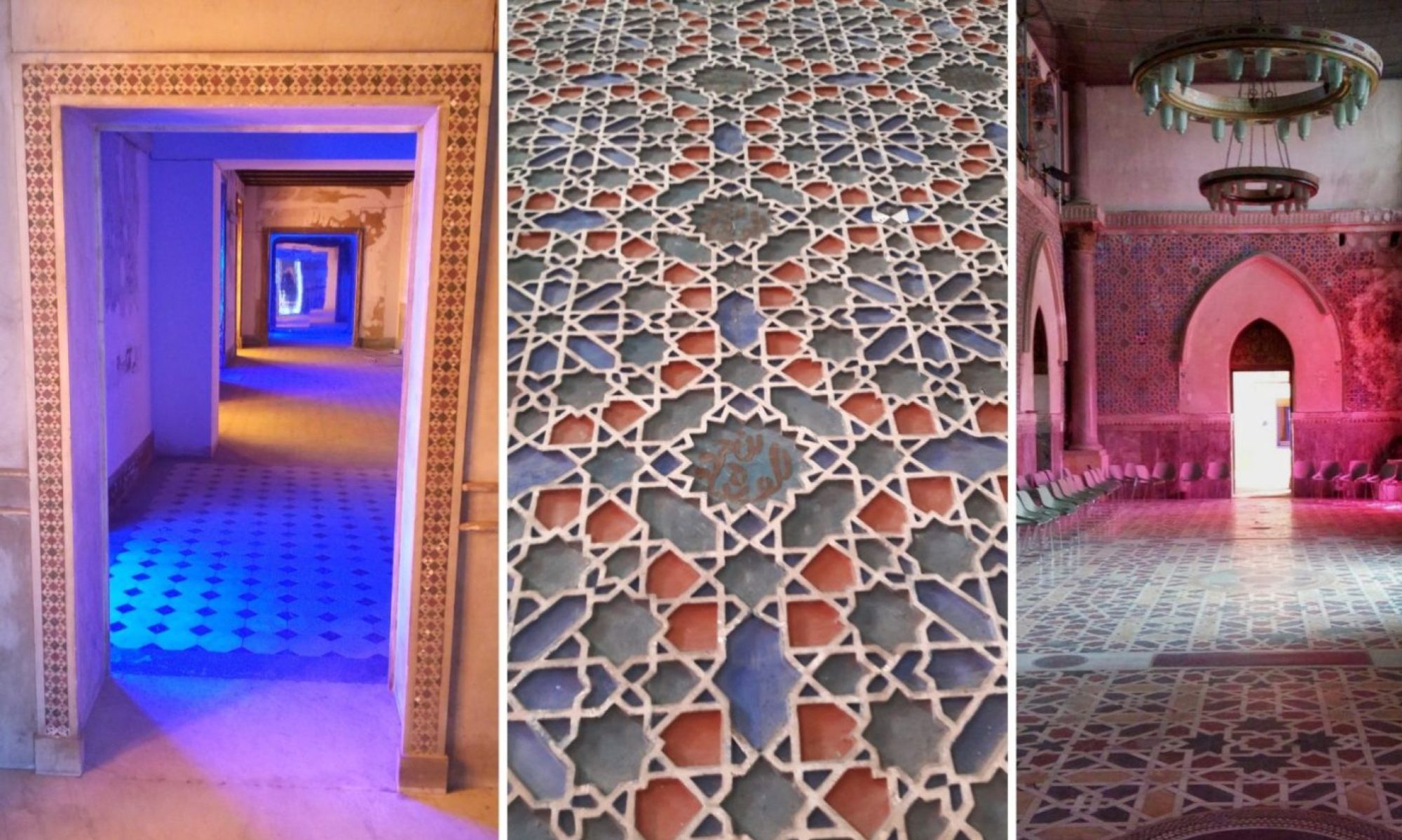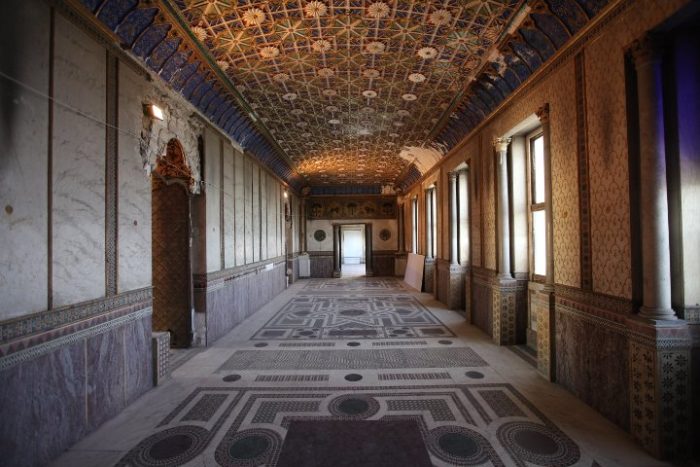[:it]Siamo ormai alle porte di Made OF Sicily. Tra poco meno di un mese assisteremo alla prima MostraEvento siciliana che vedrà esposte le opere di 20 giovani artisti siciliani prevalentemente under 24, pittori, scultori, fotografi, illustratori, digitalartist, nel maestoso Palazzo Forcella De Seta.
Oggi vi raccontiamo qualche curiosità sulla location della mostra: lo splendido Palazzo Forcella De Seta, che sorge al di sopra delle mura cittadine in Piazza della Kalsa a Palermo. Il palazzo si erge sui resti del bastione Vega e sulla porta dei Greci, e si affaccia sulla strada Colonna (attuale Foro Italico). Dal 2003 è sede dell’Ance (Associazione nazionale costruttori edili).
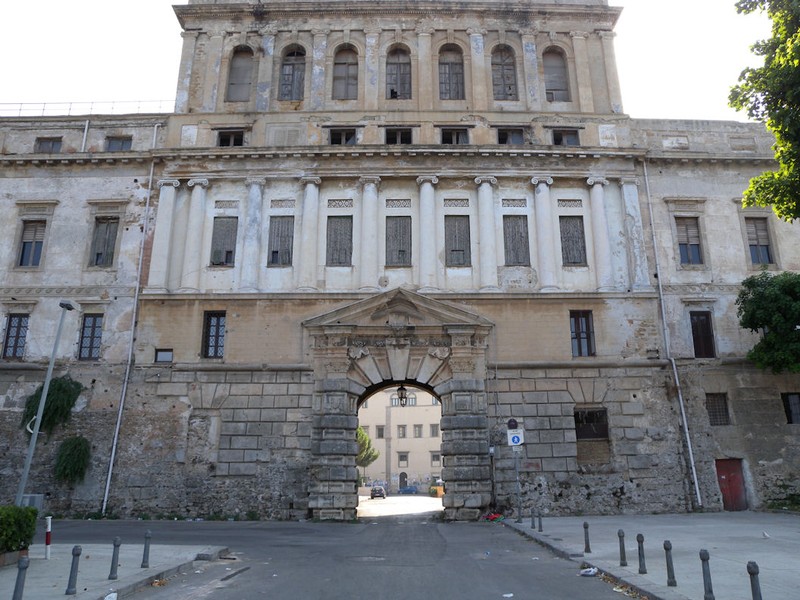
I primi scritti riguardanti la villa risalgono al 1816 quando Gaspare Palermo descrisse il Palazzo nella “Guida della Città di Palermo e suoi dintorni”. L’autore lo descrive come un luogo “sparso di alberi e di piante forestiere ed indigene, che lo rendono all’estremo delizioso e vi sono disposti con ricercata ineguaglianza dei capricciosi ed ameni viali”. Poco dopo, una serie di eventi succedutisi nel 1820 colpirono duramente il Palazzo: la batteria marina e le navi cannoniere dei rivoltosi lo diroccarono per spingere allo scoperto le truppe borboniche lì asserragliate. Da quel momento il Palazzo venne saccheggiato, i pavimenti smattonati, gli usci lasciati senza porte, i balconi senza vetrate.
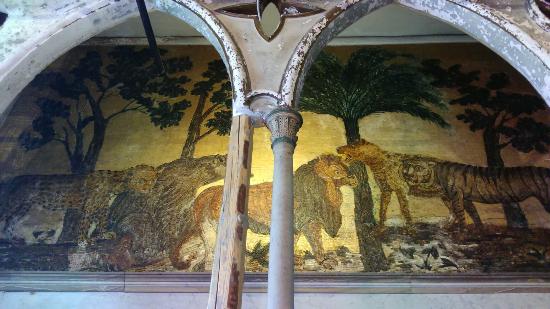 Solo nel 1833 la villa, allora proprietà dei principi di Cattolica e che non si sarebbe chiamata Palazzo Forcella De Seta fino ai primi del ‘900, venne ceduta al marchese Enrico Carlo Forcella, che s’impegnò a ricostruire la proprietà e vi stabilì la propria dimora. Enrico nacque a Palermo nel 1795 da Giuseppa Almirante e da Antonio Forcella che, con diploma reale, nel 1815 aveva ottenuto per sé e i suoi eredi il titolo di marchese. Come il padre, Enrico rivestì importanti cariche onorifiche tra cui Gentiluomo di Camera e Maggiordomo di Settimana di Ferdinando II.
Solo nel 1833 la villa, allora proprietà dei principi di Cattolica e che non si sarebbe chiamata Palazzo Forcella De Seta fino ai primi del ‘900, venne ceduta al marchese Enrico Carlo Forcella, che s’impegnò a ricostruire la proprietà e vi stabilì la propria dimora. Enrico nacque a Palermo nel 1795 da Giuseppa Almirante e da Antonio Forcella che, con diploma reale, nel 1815 aveva ottenuto per sé e i suoi eredi il titolo di marchese. Come il padre, Enrico rivestì importanti cariche onorifiche tra cui Gentiluomo di Camera e Maggiordomo di Settimana di Ferdinando II.
Il marchese intrecciò rapporti con Nicolò Puglia, architetto della Real Casa, che negli anni della costruzione di Palazzo Forcella stava eseguendo dei restauri nel Palazzo Reale e in particolare nell’appartamento del re. L’assidua frequentazione della Cappella Palatina e degli edifici di età normanna di proprietà regia influenzò non poco il marchese Forcella nelle scelte degli apparati decorativi del suo Palazzo sopra Porta dei Greci.
Si possono individuare tre diverse fasi nella ristrutturazione del palazzo a cura del marchese Forcella. La prima, conclusa nell’ottobre del 1834, riguardò la riparazione dei danni subiti nel 1820. La seconda si concluse nel 1841 e vide impegnato l’architetto Palazzotto che riconfigurò in stile neoclassico il corpo centrale e la relativa sopraelevazione. Infine l’ultima fase di restauro comportò alcuni interventi in stile neogotico del Patricolo, con l’addizione del corpo-orientale comprendente, tra l’altro, una piccola sala ottagonale angolare con una fontana di ispirazione moresca.
Erudito, grecista, appassionato d’arte, archeologia e numismatica, Enrico Forcella morì a Palermo il 30 agosto del 1855 senza figli, lasciando ogni suo bene al nipote Antonio, figlio del fratello Orazio.
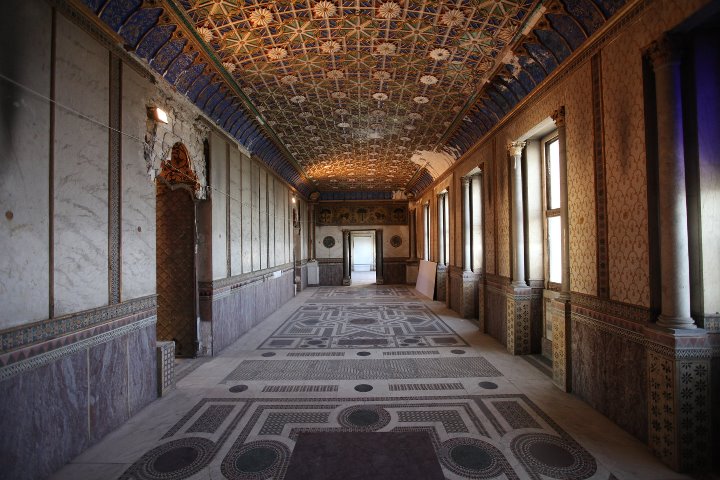
Nei primi decenni del Novecento l’edificio venne acquistato dal marchese Francesco De Seta, prefetto di Palermo. Su commissione del De Seta, intorno al 1923, Onofrio Tomaselli affrescò il grande salone neoclassico contiguo alle due gallerie. Negli anni ’50 il Palazzo subì ancora trasformazioni: prima divenne un circolo e una sala da gioco e successivamente la sede del Consiglio di Giustizia Amministrativa. Tutto ciò mutò radicalmente l’uso della casa signorile, segnando, in qualche modo, l’inizio di un’inesorabile decadenza.
Palazzo Forcella De Seta è stato acquistato nel 2003 da Ance Palermo. Ance è un’associazione datoriale di categoria delle imprese edili, che promuove lo sviluppo e il progresso dell’industria delle costruzioni e tutela i diritti e gli interessi professionali degli imprenditori del settore della provincia di Palermo. Dall’acquisto Ance si è impegnata nella tutela e nel recupero dell’edificio, effettuando opere di recupero delle parti più danneggiate come i tetti e le sale più rappresentative. Ance cerca inoltre di garantire la fruibilità della maestosa sede ospitando regolarmente appuntamenti culturali importanti, dalla prima mostra della Biennale di Venezia agli incontri organizzati con l’Università.
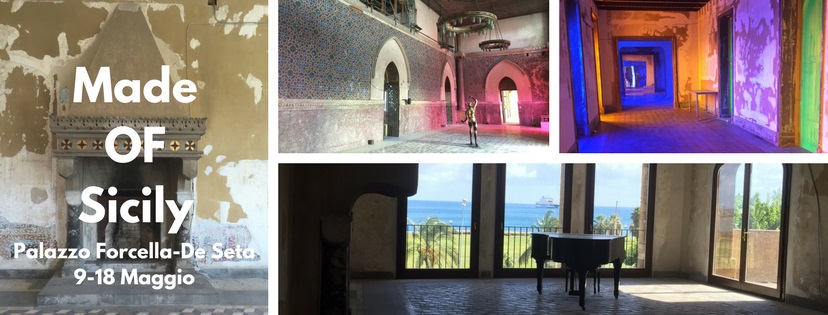
Dal 9 al 18 maggio 2017 le porte del fastoso Palazzo Forcella De Seta saranno aperte per 10 giorni consecutivi al pubblico in occasione della MostraEvento organizzata da Sicily and Sicilians, qui il programma. Non perdetevi questa grande opportunità per visitarlo! Per maggiori info sul palazzo cliccate qui.
[:en]We are now towards the end of Made OF Sicily event. In a little less than a month, we will witness the first Sicilian MostraEvento featuring the works of 20 young Sicilian artists mostly under 24, painters, sculptors, photographers, illustrators, digitalartists, in the majestic Palazzo Forcella De Seta.
Today we are sharing some interesting facts about the location of the exhibition: the splendid Palazzo Forcella De Seta, which stands above the city walls in Palermo’s Piazza della Kalsa. The palace stands on the remains of the Vega bastion and the Gate of the Greeks, and overlooks Colonna street (present-day Foro Italico). Since 2003 it has been the headquarters of Ance (National Association of Building Contractors).

The first writings regarding the villa date back to 1816 when Gaspare Palermo described the Palace in his “Guide to the City of Palermo and its Surroundings” .The author describes it as a place “scattered with trees and plants foreign and indigenous, which make it in the extreme delightful and are arranged there with refined inequality of capricious and pleasant avenues.” Shortly thereafter, a series of events that occurred in 1820 hit the Palace hard: the insurgents’ naval battery and gunboats hijacked it to push out into the open the Bourbon troops barricaded there. From that moment on, the Palace was ransacked, the floors smashed, the exits left without doors, the balconies without stained glass.

It was not until 1833 that the villa, then owned by the princes of Cattolica and which would not be called Palazzo Forcella De Seta until the early 1900s, was given to Marquis Enrico Carlo Forcella, who undertook to rebuild the property and established his own residence there. Enrico was born in Palermo in 1795 to Giuseppa Almirante and Antonio Forcella, who, by royal diploma, had obtained for himself and his heirs the title of marquis in 1815. Like his father, Enrico held important honorific positions including Gentleman of the Chamber and Butler of the Week of Ferdinand II.
The marquis forged relations with Nicolò Puglia, architect of the Royal Household, who in the years of the construction of the Forcella Palace was carrying out renovations in the Royal Palace and in particular in the king’s apartment. His assiduous frequentation of the Palatine Chapel and of the Norman-era buildings owned by the king influenced the marquis Forcella in no small measure in the choices of the decorative apparatus of his Palace above Porta dei Greci.
Three different phases can be identified in the renovation of the palace by Marquis Forcella. The first, completed in October 1834, involved the repair of damage suffered in 1820. The second was completed in 1841 and involved the architect Palazzotto, who reconfigured the central body and its elevation in the neoclassical style. Finally, the last phase of restoration involved some interventions in the neo-Gothic style by Patricolo, with the addition of the eastern body including, among other things, a small octagonal corner hall with a Moorish-inspired fountain.
A scholar, Greek philosopher, enthusiast of art, archaeologic and numismatics, Enrico Forcella died in Palermo on August 30th, 1855 without children, leaving all his possessions to his nephew Antonio, son of his brother Orazio.

In the early decades of the 20th century the building was purchased by Marquis Francesco De Seta, prefect of Palermo. On De Seta’s commission, around 1923, Onofrio Tomaselli frescoed the large neoclassical hall adjoining the two galleries. In the 1950s the Palace underwent further transformations: first it became a club and gambling hall and later the seat of the Council of Administrative Justice. All this radically changed the use of the stately home, marking, in a way, the beginning of an inexorable decline.
Palazzo Forcella De Seta was purchased in 2003 by Ance Palermo. Ance is an employers’ association of construction companies, which promotes the development and progress of the construction industry and protects the rights and professional interests of contractors in the sector in the province of Palermo. Since its purchase, Ance has been committed to the protection and recovery of the building, carrying out restoration work on the most damaged parts such as the roofs and the most representative rooms. Ance also seeks to ensure the usability of the majestic venue by regularly hosting important cultural events, from the first exhibition of the Venice Biennale to meetings organized with the University.

From May 9th to 18th, 2017, the doors of the sumptuous Palazzo Forcella De Seta will be open for 10 consecutive days to the public for the MostraEvento organized by Sicily and Sicilians, here’s the programs. Don’t miss this great opportunity to visit it! For more info about the palace click here.
[:]
Vuoi iscriverti alla nostra newsletter e rimanere sempre aggiornato?
